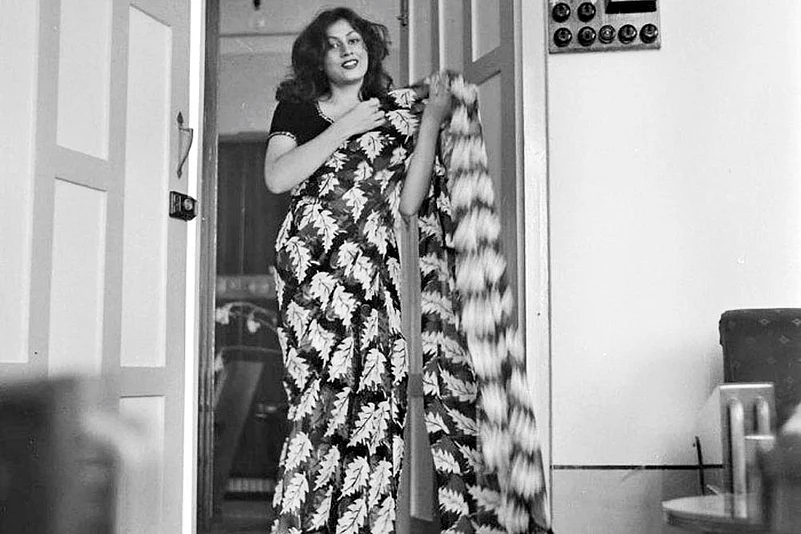A single seamless piece of clothing, conceived on the loom as a three-dimensional garment not pierced or intruded upon by the stitching needle. No one knows exactly when it was invented. It evolved, as all things do, continuously over the centuries, with each region adding its own flavour and colour to it until it became what we know or perceive today as a national garment of sorts. The deep involvement and complete sense of identity of the Indian woman with it defines the sari.
Yet, while the basic garment has resisted change, providing continuity in weaving traditions, a significant change in the style of wearing the sari came in the 19th century, when, under colonial rule, an entire set of practices had to be reinterpreted in order to facilitate the inevitable negotiations with modernity. The modern, urban sari that we are familiar with today is a result and product of this urge.
Chitra Devi’s marvellous book Thakur Barir Onder Mohal in the 1970s (translated for us from Bengali by Riten Mazumdar) gives an insight into when the modern sari got fashioned: “It is said that Satyendranath (elder brother of Rabindranath) Tagore’s wife, Gyanodanandini, went with her civil servant husband to Bombay around the 1870s and adopted the Parsi way of wearing the sari, as at that time the local Bengali way was not considered elegant enough for outdoor wear.”
Gyanodanandini adopted the petticoat and the blouse from the Parsis and lengthened the sari by two cubits so that she had enough cloth for the front pleats and it could be also thrown over the left shoulder unlike the traditional Bengali wearing style. The pleated front, unlike the more tightly wrapped garment of old, facilitated mobility, and is therefore actually a sign of changing times rather than of tradition per se. Significantly, when she returned to Calcutta five years later, Gyanodanandini opened a school for “ladies who wanted to go out”.

The book also refers to other modifications under way during that period: “It seems to have been a time when a number of ladies were experimenting with supposedly more sophisticated ways of wearing the sari. The sari went through various stages of resembling the hobble skirt and the gown. At one stage the pallav was made so short that it could not cover the head and thus, a mukut (crown-like topee) was worn with a flowing backcloth. Suniti Devi, the Maharani of Cooch Behar, preferred to have a scarf over the head, worn like a Spanish mantilla.” But it was Gyanodananandini’s style that gained prominence in the next 150 years and became popular in urban as well as rural areas.
My sari journey, undertaken for the research of our book Saris of India: Tradition and Beyond, became a sort of Bharat darshan. It was an eye opener—our means of finding a pathway through the labyrinth of India’s inherited material/textile culture. It is such a fluid garment; there is always a personal style of wearing it possible despite a hundred and eight variations of the sari drape featured in the book. That is the reason for a resurgence of interest in the sari among the young who can now see the potential of refashioning it in their own personal wear and not having to keep to the strictly traditional drapes.
(As told to Martand Badoni)
Rta Kapur Chishti a researcher and design developer who has written a comprehensive book on the sari





















